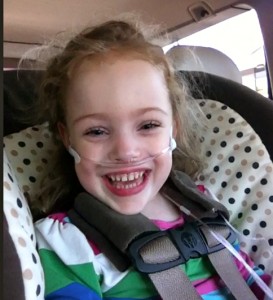The debate over whether to adjust the $250,000 pain and suffering cap in medical malpractice lawsuits for inflation is pitting insurance companies against trial lawyers, each offering their own versions of what passage of Proposition 46 would mean. Insurers insist it will cause malpractice premiums to skyrocket and force many doctors to relocate out of California. Trial lawyers say it would simply allow more malpractice victims to recover just compensation.
Amid all the campaign rhetoric, locally, there is one group who is hoping that Prop. 46 will pass: residents of Santa Clara County and San Mateo County who feel they were wronged when the damages they were permitted to recover in their medical malpractice claims was capped by the state legislature at $250,000.
Past malpractice victims like Bob Pack, a Sunnyvale resident whose two preteen children were killed by a driver to whom HMO doctors had overprescribed painkillers, won’t benefit directly if Proposition 46 passes. However, Pack, who is co-sponsoring the initiative, is committed to raising the cap to “increase doctors’ accountability” and make it easier for future victims to be fairly compensated.
Proposition 46 proponents point to Robyn Frankel, a Menlo Park woman, who suffered a medical crisis during a routine medical procedure that rendered her a quadriplegic. Frankel, who died of her injuries in 2013, was no longer able to care for her two pre-teen children and required around-the-clock care.

Frankel’s $6 million verdict for pain and suffering by a Santa Clara County jury in 2012 was reduced by the cap to $250,000. If Proposition 46 had been in effect, the award would have still been reduced, but to $1.1 million.
The jurors were “mortified” after trial when they learned of the reduction, said Jeff Mitchell, her trial lawyer and one of the top medical malpractice attorneys. Under state law, jurors are not informed of the cap on damages during trial.
“If this type of case were brought in a state like New York or Illinois [that has not imposed a cap], it would settle for $20 million, Mitchell said.
When medical malpractice victims like Frankel do not receive enough in a settlement to cover their care, taxpayers end up picking up the bill, local lawyers explained.
Hal Dasinger, vice president of government relations for The Doctors Company, the leading medical malpractice insurer in the state, said that passage of Proposition 46 would likely increase claims and have an “effect on premiums, on the availability of care, particularly specialty care, in those specialties that already pay high premiums” like ob-gyn. Proponents like Wade Westhoff dismiss this concern, noting that a higher cap might actually reduce both premiums and claims by helping doctors “learn from their mistakes.”
The cap oftentimes deters lawyers from taking on worthy cases.
Westhoff, whose 21-month-old daughter died in a 2013 surgery to cure a birth defect, had his malpractice case turned down by five different Bay Area attorneys because “it just wouldn’t make [economic] sense with the… $250,000 cap.” He was only able to retain a lawyer from the Los Angeles area.
“We couldn’t believe we were getting kicked in the gut after getting our heart ripped out [in] losing our daughter,” said Westhoff, a certified financial planner whose case for wrongful death is currently pending.
Since it can cost up to $150,000 just for the expert witness fees and court costs involved in trying a case in the Bay Area, the current $250,000 cap on pain and suffering damages makes it economically impractical for many to file cases, noted local attorney Bradley Corsiglia, a top medical malpractice lawyer.
Mitchell explained how he “turns down 500 cases for every one that I take” in the Bay Area because the $250,000 cap frequently makes the costs of litigating them more than the potential recovery. He stressed how the cap “disenfranchises 90 percent of the people who have meritorious malpractice claims” because it makes their cases “economically unfeasible.”
Claire McCormack, a Redwood City attorney whose three-year-old daughter Nora died in 2013 due to what she described as “completely basic, preventable errors” when being treated for septic shock, is still trying to find a malpractice attorney to take what is referred to by some attorneys as a “250 case” — one where the potential recovery is capped at $250,000.
Pack — who was instrumental in putting this measure on the ballot — had his own case turned down by eight different attorneys.
“[The cap] victimized our family a second time…by putting a value of $250,000 on the life of a child,” he said. Although several doctors at the same HMO prescribed “thousands of Vicodin pills” to the driver who killed his two children, they were “not even disciplined,” let alone held accountable in court because of the cap, he said.
The most recent Field Poll taken Oct. 31 shows Proposition 46 trailing 49 percent to 32 percent. But if the measure does pass, it would take effect on Jan. 1.
(Homepage image courtesy of “jasleen_kaur” on Flickr via Creative Commons.)
